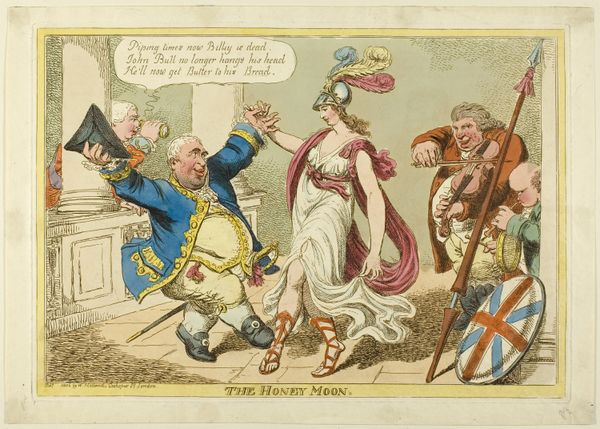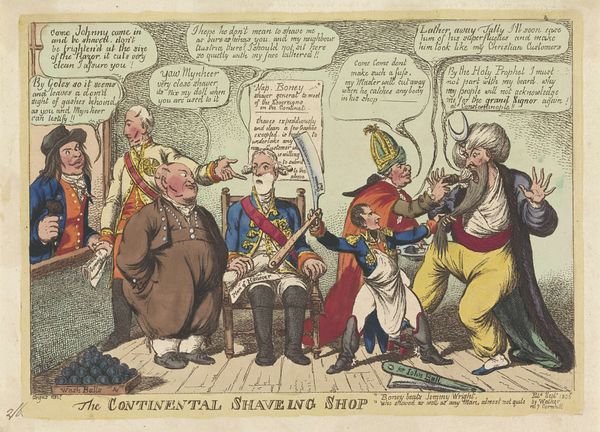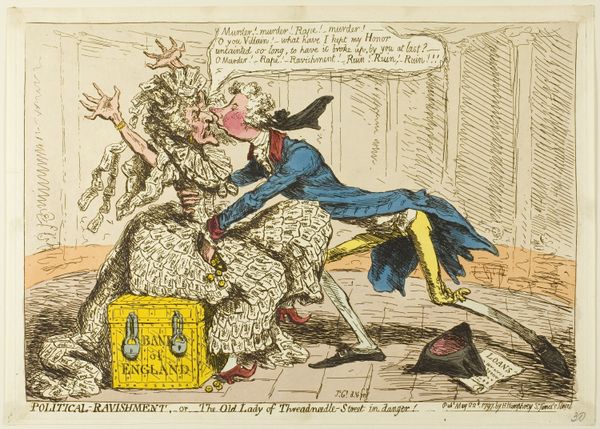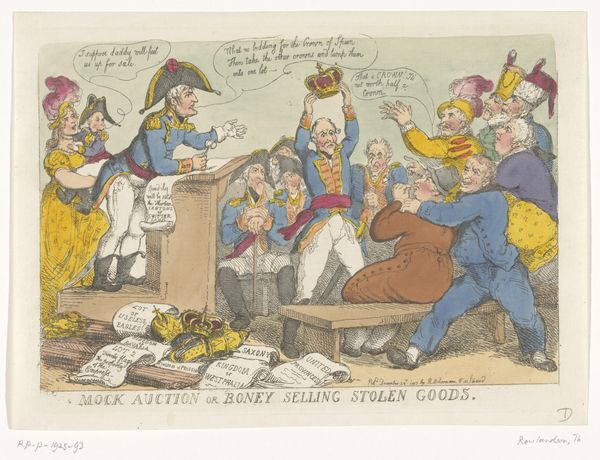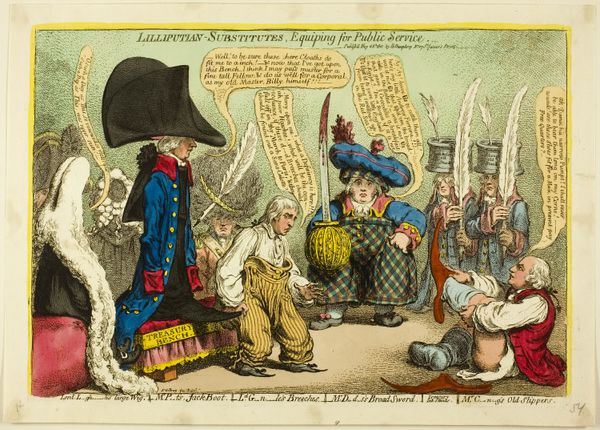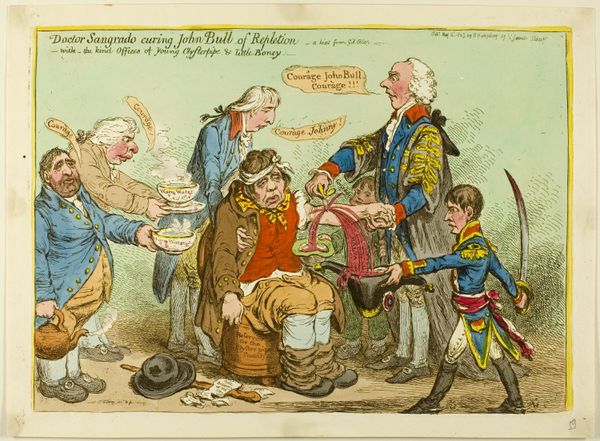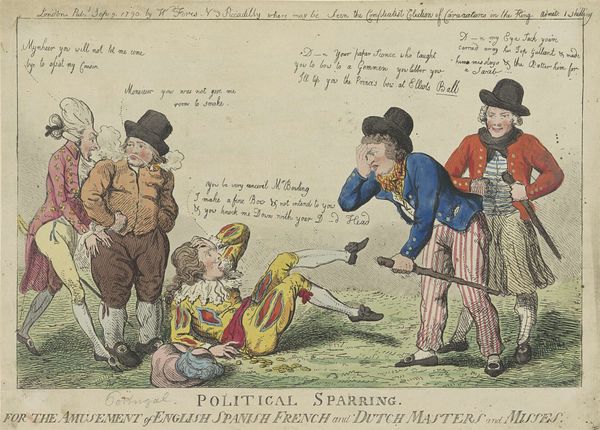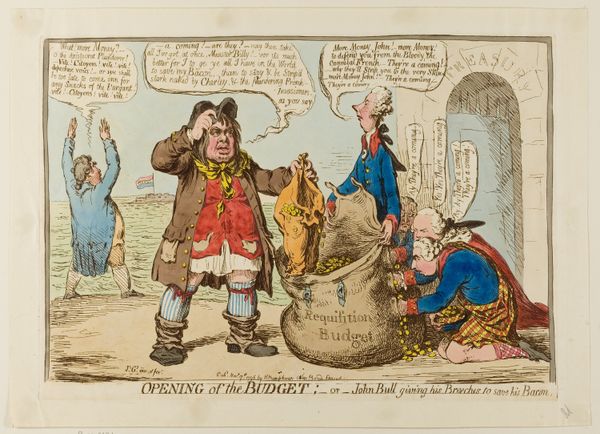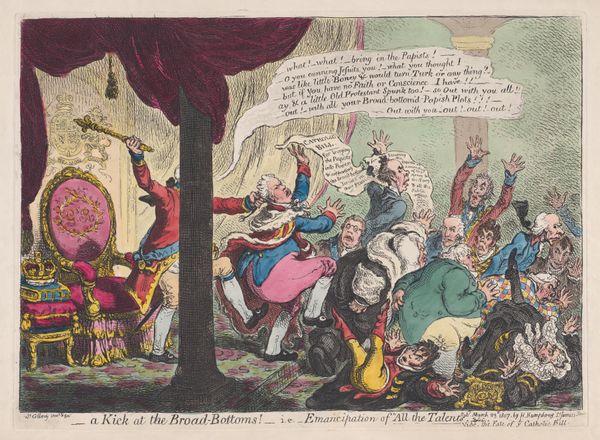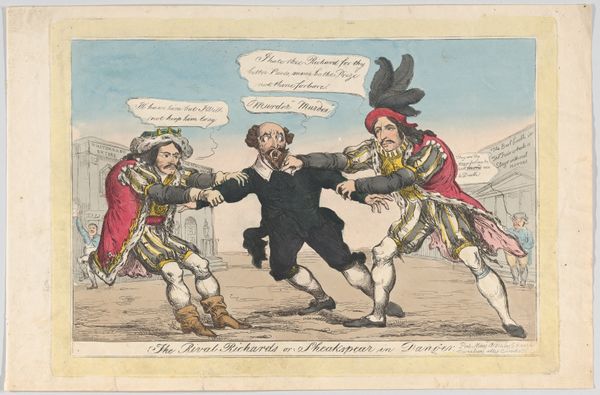
drawing, print, etching, paper, watercolor
#
drawing
#
neoclacissism
#
water colours
# print
#
etching
#
caricature
#
paper
#
watercolor
#
genre-painting
Dimensions: 225 × 343 mm (image); 246 × 341 mm (plate); 272 × 383 mm (sheet)
Copyright: Public Domain
Editor: "Kissing Hands," possibly from 1806 by Charles Williams, uses etching, watercolor, and other printmaking techniques on paper. I am immediately struck by the absurdity of the scene – all these people bending over! What's your read on it? Curator: What grabs me is the materiality itself. Look at the labor involved in creating this caricature, likely for mass consumption. The printmaking process allowed for wide distribution of this image challenging, through its reproducibility, the very idea of unique artworks traditionally valued in Neoclassical art. The watercolours soften the satirical bite, don’t you think? Were they perhaps applied by a separate workshop to expedite the production? Editor: That’s a fascinating perspective! I was focused on the content of the image, this almost grotesque display of bowing and scraping. Curator: But even that performance you see plays into this materialist view. Consider the social context. What labor are those performing by humbling themselves? What power structures are reinforced, made *visible*, by these acts of obeisance? Who consumes such an image? The rising merchant class eager for social mobility? Does the print celebrate or critique them? Editor: I see what you mean. The very act of printing and distributing this image challenges those hierarchies even as it depicts them. Curator: Precisely! It reminds us that art is not separate from labor and economic forces but intimately entwined with them. Editor: I never thought about a historical print in terms of its *means of production* like this. It really opens up a whole new avenue for understanding the work. Thanks! Curator: It’s vital we analyze those avenues and democratize them in art history and critique.
Comments
No comments
Be the first to comment and join the conversation on the ultimate creative platform.

